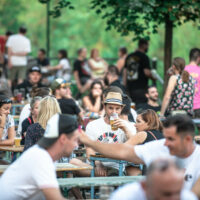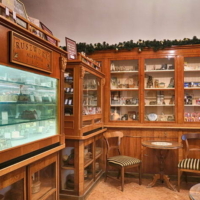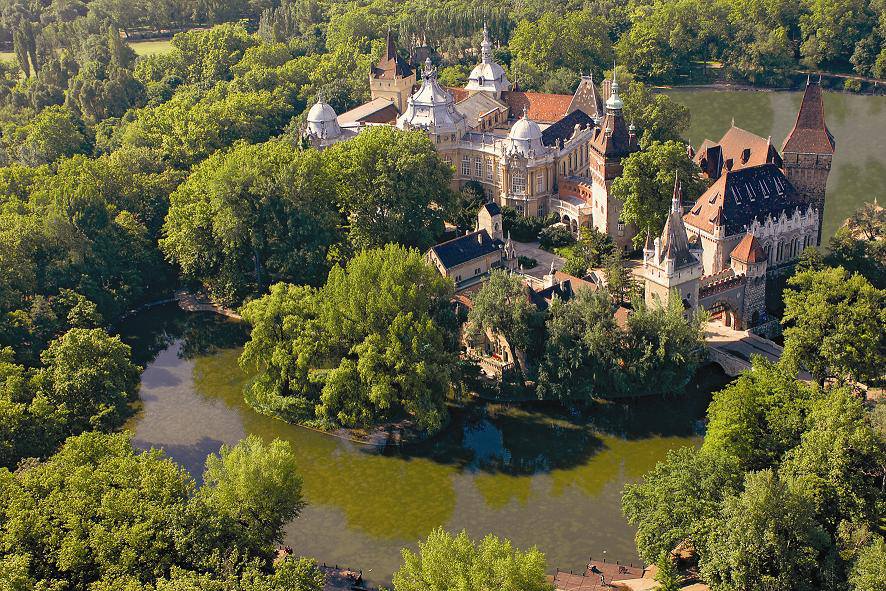The mysterious castle of Budapest City Park – PHOTO
When and why was it built, and what purpose does it serve today?
Budapest has many beautiful hidden spots that will make your stay even more pleasant. The Vajdahunyad Castle in the City Park is not one of them when it comes to hidden locations in the Hungarian capital. The castle is situated right behind the big ice-skating rink that attracts both locals and tourists every Winter. In Spring and Summer, the City Park is one of the most popular places to hang out with friends, have a walk, or have a drink.
We are pretty sure that the photo of the Castle below will look familiar.

Facebook – Magyar Mezőgazdasági Múzeum
If you have been to Budapest and visited the Heroes’ Square, for sure you have seen the Vajdahunyad Castle, at least from a distance. You might have even wondered about what such a small castle with a unique presence and a special atmosphere is doing in the middle of a vast park.
The Castle was rebuilt for the 1000th anniversary of the Hungarians’ Conquest of the Carpathian Basin.
A special series of events for the Millenium was organised in 1896, part of which was the reconstruction of the building standing there. Honouring the past and the first Hungarians who lived and worked on this soil, Minister of Agriculture Ignác Darányi
decided to establish an independent Museum of Hungarian Agriculture.
Based on his idea, it would not only present the history and development of Hungarian agriculture but would also be the perfect location for farmers and all those in the industry to discover the latest technologies and developments.
The museum is celebrating the 125th anniversary of its foundation this year.
Although the idea and the legal documents were born in 1896, the museum opened a year later, in September 1897, writes pestbuda.hu.

Facebook – Magyar Mezőgazdasági Múzeum
The grand-opening day attracted over 1600 people, which is a nice number, considering the population of the capital and the transportation options at that time. Two and a half years later, almost 170 thousand people were curious to learn about Hungarian agriculture. It is over the third of the capital’s population at that time.
The building in itself represents Hungary and its first millennium.
Architectural styles of different times complement each other perfectly, starting from Romanesque through Gothicism and Renaissance, arriving at the Baroque.
Both Hungarian and European characteristics of these styles are represented all around the building.

Facebook – Magyar Mezőgazdasági Múzeum
The designer, Ignác Alpár, wanted to create a museum building that stands closer to the Hungarian heart. Instead of using general elements of the styles, he took distinctive features from iconic buildings of the country’s history.

Facebook – Magyar Mezőgazdasági Múzeum
The gate of the Church of Ják, a part of the chapel of the Dome of Pécs, and the Károly-gate of Gyulafehérvár are just some of these elements.
The castle was named after the Vajdahunyad Castle standing in Transylvania, as the most characteristic part of it resembles the original building.
One of the most important pieces of the museum is the country’s first steam traction engine that arrived in Hungary in 1852.

Facebook – Magyar Mezőgazdasági Múzeum
Even if someone is not particularly interested in agriculture, the exhibitions are so much more than just a sector in the country’s life. By chronologically presenting the tools and machines used in the past, we get a more comprehensive picture and understanding of the lives of Hungarians of the past century.

Read alsoCheck out these 5 hidden gems of Hungarian landmarks!
Source: pestbuda.hu, mezogazdasagimuzeum.hu
please make a donation here
Hot news
Outrageous: Teenager arrested for planning mosque attack in Hungary – VIDEO
You can now buy tickets for exhibitions and sightseeing tours on Wizz Air platforms!
March of the Living to be held in Budapest this Sunday
Unforeseen: Hungarian guest workers are leaving Austria – here is why
OECD sees the Hungarian economy gaining strength
Breathtaking PHOTOS: Hungary’s fairytale aristocratic castles





1 Comment
Sad to see the neglect of inside the museum,
Still fascinating place.